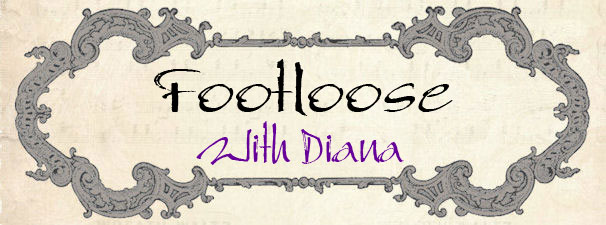The capital of the Slovak Republic is about all we saw of that country, but it's a lovely, relatively small (not quite half a million people) city with a history going back to the Neolithic period, probably because of its proximity to the Danube River. It has a lot of wonderful Art Nouveau architecture, too.
Our hotel was right on the Danube, so we had a nice view of the Bridge of the Slovak Uprising, with its UFO-shaped restaurant. I must say it's more dramatic at night...
We backed onto the American Embassy compound, so getting around was...interesting. We got there in the evening, so we at least had to have a walk around.
St. Martin's Cathedral, built between the 13th & 16th centuries. Note the bridge immediately to the left.
That was the site of an old synagogue, torn down to complete the tower bridge; it could have been saved had the footing been moved over two feet, but this was of no moment to the Communists, so all that remains is an image of the synagogue etched into the marble.
15,000 Jews were sent to Nazi concentration camps during World War II. Few returned, and all but a few of those, the very elderly, emigrated to Israel. This is a memorial to them:
Our hotel was right on the Danube, so we had a nice view of the Bridge of the Slovak Uprising, with its UFO-shaped restaurant. I must say it's more dramatic at night...
We backed onto the American Embassy compound, so getting around was...interesting. We got there in the evening, so we at least had to have a walk around.
Slovak National Theater, night and day:
detail:
Town Hall, the oldest in the Slovak Republic
Like the cannonball in the wall? Buildings damaged by Napoleon's troops were entitled to a payout...
Bratislava Castle
Some kind of fortification has been here since 907; it has been rebuilt, expanded and remodeled many times over. It was destroyed by fire in 1811 and lay in ruins until the 1950s, when it was rebuilt largely the way it was in its last incarnation under Maria Theresa in the 18th century. This was done by the Communist regime, pretty much just to show Austria (across the river) how prosperous they were, although it never had much inside until recently.
Love the Roman SPQR!
The view to Austria across the Danube
St. Martin's Cathedral, built between the 13th & 16th centuries. Note the bridge immediately to the left.
That was the site of an old synagogue, torn down to complete the tower bridge; it could have been saved had the footing been moved over two feet, but this was of no moment to the Communists, so all that remains is an image of the synagogue etched into the marble.
Bratislava is big on street art, either the streets themselves...
Or bronze street statuary. This one's Hans Christian Andersen, who visited the city in 1841.
Napoleon
Franz Liszt, another visitor:
Cute shop with its very own blimp and a cool old cash register:
Our old friend St. John Nepomuk on a plague column







































No comments:
Post a Comment